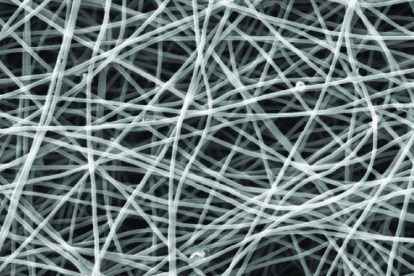Bacteria-Coated Nanofiber Electrodes to Clean Polluted Water?
Published on by Water Network Research, Official research team of The Water Network in Academic
Researchers from Cornell University have recently discovered a cost-effective and unique method of cleaning wastewater.
Bioelectrochemical engineers and material scientists made nano fiber electrodes from electro-spun carbon then covered them in PEDOT, a conductive polymer.
This coating allowed a certain type of bacteria, Geobacter sulfurreducens, to be applied electrically. The entire process takes several hours until it forms an easily visible sheet of nanofibers.

Carbon nanofibers coated with PEDOT in a scanning electron microscope image.
Juan Guzman and Meryem Pehlivaner/ Provided
Interestingly, the bacteria not only feed on pollutants, but it also produces electricity as it grows. The carbon nanofiber electrode is customizable and ideal for its biocompatibility with the bacteria, its high porosity, and surface area.
Researchers hope that wastewater treatment plants will utilize these electrodes to capture pollutants at a greater rate than current methods while also reducing the amount of land required to do so.
“Electrodes are expensive to make now, and this material could bring the price of electrodes way down, making it easier to clean up polluted water,” said co-lead author Juan Guzman, a doctoral candidate in the field of biological and environmental engineering.
Read more: Trendin Tech
Media
Taxonomy
- Treatment
- Technology
- Filtration Solutions
- Filtration
- Biotechnology
- water treatment
- Utility Chemicals